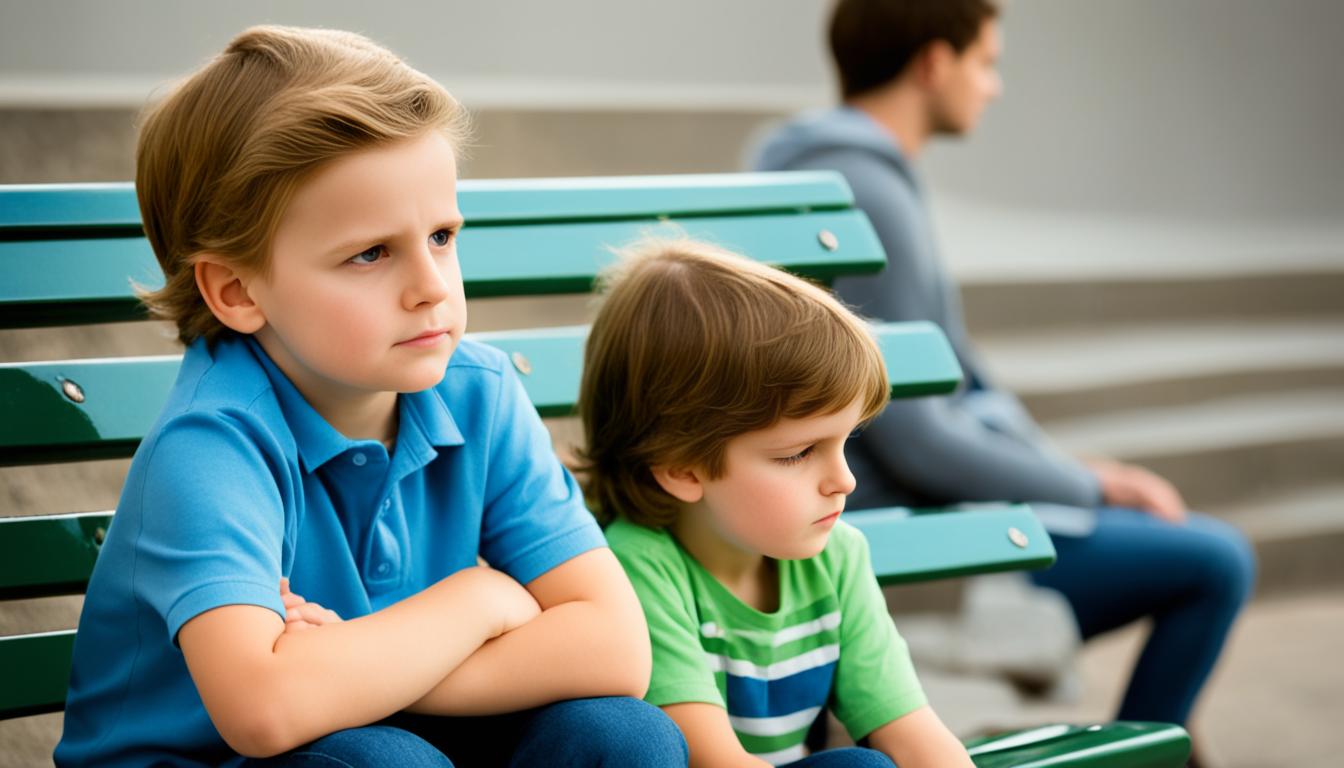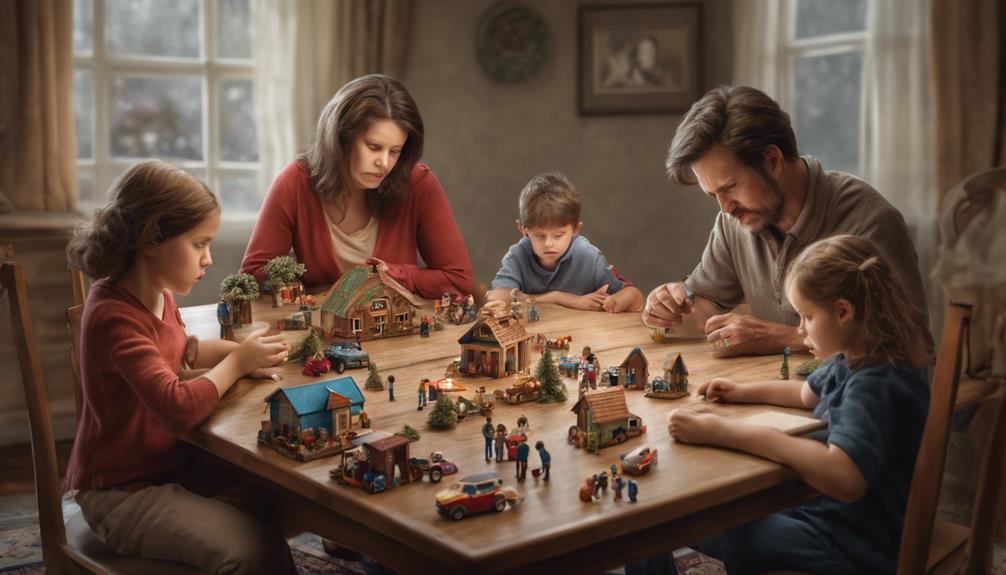Did you know that approximately 1.5 million children in the United States experience their parents’ divorce each year? Coping with divorce can be a major obstacle for children, placing them in a situation full of emotional turmoil and unpredictability. However, with the right support and effective coping strategies, children can emerge from these difficult times stronger, with resilience and a sense of stability.
Key Takeaways:
- Divorce can be emotionally challenging for children, but there are coping strategies that can help them navigate through this difficult time.
- Allow children to express their emotions and create a safe space for them to share their feelings.
- Establish consistent routines and open lines of communication to provide stability.
- Seek support from professionals and support groups to help both children and parents.
- Model calm and civility, and avoid speaking negatively about the ex-spouse in front of your children.
Understanding Children’s Reactions to Divorce
When children first learn about their parents’ divorce, it is natural for them to go through an adjustment period. This period is crucial for children to process their emotions and come to terms with the significant changes happening in their lives. During this time, parents play a vital role in providing support and understanding to help their children cope.
Creating a safe space where children can express their feelings is essential. Parents should encourage open communication and reassure their children that it is okay to feel upset, angry, or sad. By validating their emotions, parents help their children navigate the complex emotions associated with divorce.
It is crucial for parents to avoid pressuring their children to be happy during this adjustment period. Instead, they should allow their children to share their thoughts and concerns without judgment. By giving children the freedom to process their emotions, parents provide them with a sense of control and autonomy in a situation that can feel overwhelming.
“Divorce can be a challenging experience for children, and it’s important for parents to offer them emotional support during this time. By creating a safe and understanding environment, parents can help their children navigate their emotions and adjust to the changes.”
It is essential to remember that every child’s experience is unique, and their reactions to divorce can vary. Some children may display anger, while others may exhibit sadness or confusion. Parents should be attentive and observant of their children’s behavior and offer support accordingly.
To further facilitate their children’s emotional well-being, parents can engage in activities together, such as drawing, playing games, or going for walks. These activities provide opportunities for children to process their emotions and strengthen the parent-child bond.
Ultimately, the adjustment period during divorce is a significant phase for children. By providing understanding, support, and a safe space for children to express themselves, parents can help them navigate their emotions, cope with anger and sadness, and eventually adapt to the changes in their lives.
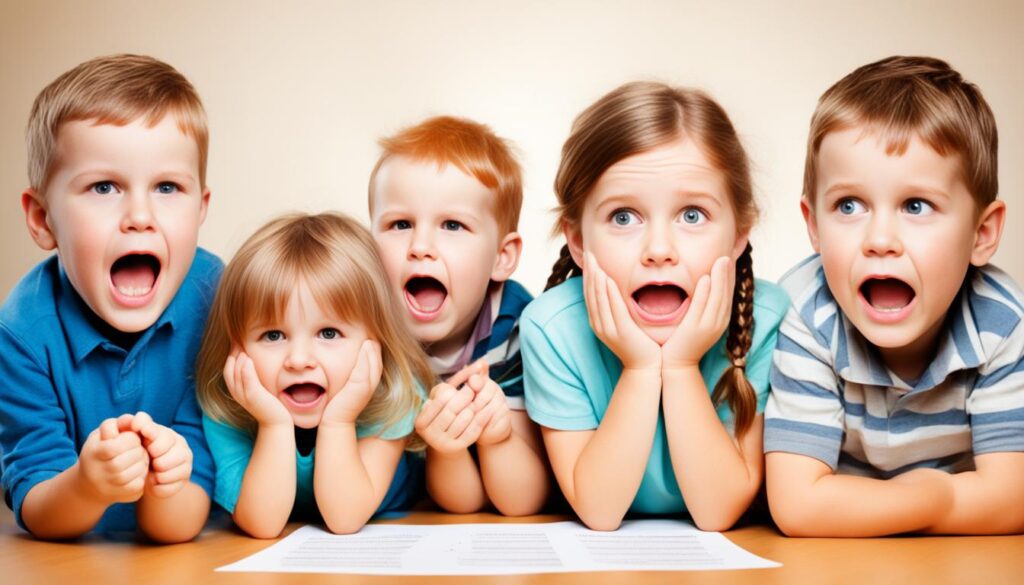
Common Reactions and Coping Strategies
| Reactions | Coping Strategies |
|---|---|
| Anger and frustration | Encourage expression through art, physical activities, or journaling |
| Sadness and grief | Validate emotions, provide comfort and reassurance |
| Confusion and uncertainty | Offer age-appropriate explanations, answer questions honestly |
| Fear and anxiety | Create a predictable routine, provide reassurance and stability |
Addressing Common Worries and Behaviors
Children of divorced parents may experience a range of worries and behaviors as they navigate the challenges of divorce. It’s important for parents to understand and address these concerns to support their children’s emotional well-being.
Children’s Worries During Divorce
One common worry children may have during divorce is self-blame. They may mistakenly believe that the divorce is their fault or that they somehow caused it. Parents should reassure their children that the divorce is not their fault and provide them with constant reassurance and love. Open and honest communication is crucial in helping children understand that the decision to divorce is between the parents and not the child’s fault.
Behavior Changes in Children
Divorce can often lead to behavior changes in children. These changes may manifest as acting out, increased need for parental attention, withdrawal, or anxiety about changes in routines. Creating a consistent and predictable routine can help children feel more secure and provide them with a sense of stability during this challenging time. Parents should set clear expectations for behavior, offering guidance and positive reinforcement when necessary.
Anxiety in Children
Anxiety is another common emotion experienced by children during divorce. Changes in family dynamics and uncertainty about the future can contribute to feelings of anxiety. Parents can help their children manage anxiety by providing a safe space for them to express their feelings and concerns. Offering extra support and attention during this time can help alleviate their anxiety and promote a sense of security.
It’s essential for parents to be attentive to any signs of depression or difficulty concentrating on schoolwork in their children. If persistent or severe, these symptoms may require professional help. It’s important to remember that every child is unique, and their responses to divorce may vary. By addressing their worries, behaviors, and anxieties, parents can provide the support and guidance their children need to navigate the challenges of divorce successfully.
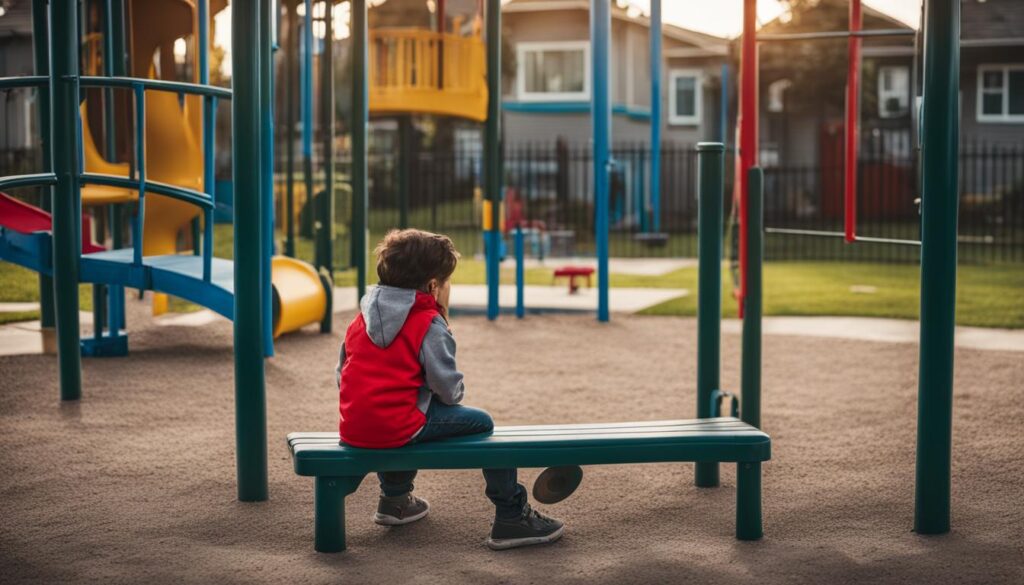
| Common Worries and Behaviors | How to Address Them |
|---|---|
| Self-blame | Reassure children that the divorce is not their fault and provide constant love and support. |
| Behavior Changes | Create a consistent and predictable routine, set clear expectations for behavior, and offer guidance and positive reinforcement. |
| Anxiety | Provide a safe space for children to express their feelings and concerns, offer extra support and attention, and promote a sense of security. |
Modeling Calm and Civility
During a divorce, it’s crucial for parents to model calm and civility, even if they may not feel that way internally. Children benefit from seeing their parents handle the situation with composure and respect. By demonstrating a sense of calm, parents can provide a reassuring environment for their children and help them navigate the challenges of divorce.
One of the key ways to model calm during divorce is by being civil with your ex-spouse. While it’s natural to experience negative emotions during this time, it’s important to avoid venting those frustrations in front of your children. Negative comments or arguments in their presence can have a lasting impact on their emotional well-being.
Instead, strive to present a united front whenever possible. This means keeping communications with your ex-spouse respectful and focused on the needs of your children. By working together and finding common ground, you can minimize conflict and create a more harmonious co-parenting relationship.
Remember, your children are watching and learning from your behavior. By handling the divorce with composure, you’re teaching them valuable skills in conflict resolution and emotional regulation. This can have a positive impact on their own ability to navigate difficult situations in the future.
Children are like sponges, absorbing everything around them. By modeling calm and civility during divorce, parents can provide a stable and supportive environment for their children to thrive.
Furthermore, by prioritizing your children’s well-being above all else, you are showing them that their needs are valued and respected. This can help alleviate any feelings of insecurity or anxiety they may experience during the divorce process.
To further illustrate the importance of modeling calm and civility, take a look at the following table:
| Modeling Calm and Civility | Impact on Children |
|---|---|
| Speaking respectfully about the ex-spouse | Children feel more at ease and secure, knowing that their parents can work together despite the divorce. |
| Avoiding conflicts in front of children | Children are shielded from unnecessary emotional distress and can focus on their own emotional well-being. |
| Presenting a united front | Children feel a sense of stability and consistency, which helps them adjust to the changes brought on by the divorce. |
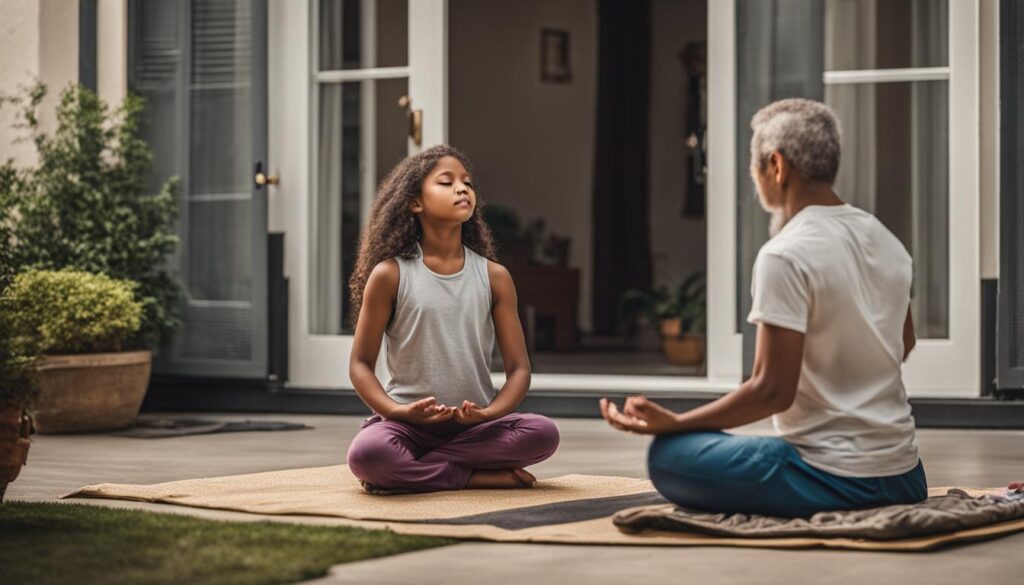
As you can see from the table, modeling calm and civility has a profound impact on children’s well-being and adjustment during divorce. By embodying these qualities, parents can foster a positive and supportive environment for their children.
By continuing to be civil and respectful, parents can ensure that their children’s best interests are at the forefront, even during this challenging time.
Seeking Support for Yourself and Your Child
Divorce can be emotionally challenging for parents, and it’s crucial to seek support for both yourself and your child during this difficult time. By reaching out for help, you can gain the necessary tools and resources to navigate the complexities of divorce and provide the best support for your child’s well-being.
Here are some strategies to consider:
- Talk to friends and family: Share your feelings and concerns with trusted loved ones who can provide emotional support and offer a listening ear. Sometimes, just having someone to talk to can make a significant difference in your overall well-being.
- Ask for help: Don’t be afraid to ask for assistance when you need it. Whether it’s asking a family member to help with childcare or seeking advice from a professional, reaching out for help can help lighten your load and provide guidance during this challenging time.
- Consider therapy: Therapy can be invaluable for both you and your child. A skilled therapist can help you navigate the emotional challenges of divorce, develop coping strategies, and provide a safe space to express your feelings. Additionally, counseling for your child can offer them a supportive environment to process their emotions and develop healthy coping mechanisms.
- Explore support services: Take advantage of the various support services available for divorced parents and their children. Many schools offer counseling programs specifically tailored to help children navigate the challenges of divorce. Additionally, community organizations and online support groups can provide a network of individuals who understand what you’re going through and offer valuable guidance and resources.
Remember, seeking support is not a sign of weakness but rather a courageous step towards healing and ensuring the well-being of both you and your child.
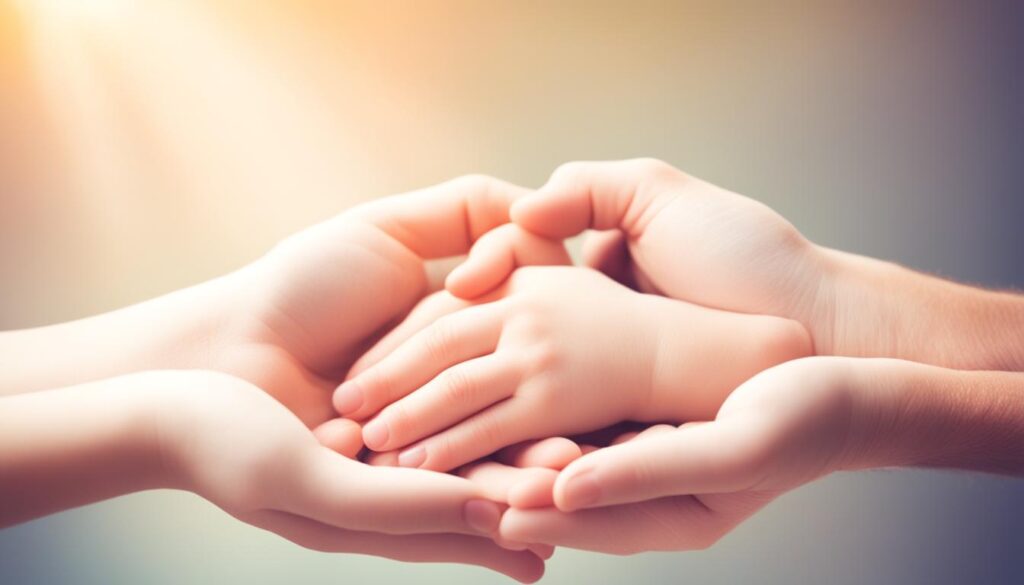
Explain the Divorce to Your Child
When it comes to explaining divorce to your child, it’s essential to approach the conversation with sensitivity and age-appropriate explanations. Each child’s understanding and emotional readiness may vary, so tailoring your explanation to their unique perspective is crucial.
For younger children, it’s important to provide reassurance of love and stability. Emphasize that the divorce is not their fault and that both parents still care deeply for them. Use simple language and avoid overwhelming them with unnecessary details.
As children grow older, they may seek a more comprehensive explanation about the reasons for the divorce. Be honest and transparent without burdening them with adult concerns. Choose a balanced approach that provides enough information without blaming either parent.
“Mommy and Daddy have decided to live separately because they believe it will be better for everyone. This decision is about us as parents and doesn’t change our love for you.”
Encourage open communication and offer your child opportunities to ask questions. Let them know that their feelings and concerns are valid and that you are there to support them. Honest and open dialogue will help foster trust and provide a safe space for them to express their emotions.
Sample Ways to Approach the Conversation
- Use age-appropriate language and concepts to ensure understanding.
- Reassure your child of your unwavering love and commitment to them.
- Explain that divorce is a decision made by adults and does not change your child’s worth or place in the family.
- Be prepared to provide ongoing support and answer questions as they arise.
- Remind your child that they can always seek guidance from trusted adults, such as teachers, family members, or counselors.
Remember, every child processes divorce differently, and they may require additional reassurance and support. Being consistent, patient, and understanding throughout the process will go a long way in helping your child adjust to the changes.

Establishing Visitation Arrangements
Deciding on visitation arrangements is an important aspect of co-parenting after divorce. By creating a structured plan for visitation, parents can provide stability and consistency for their children, helping them adjust to the new family dynamic. Effective visitation arrangements prioritize the well-being and preferences of the children involved, ensuring their voices are heard and respected.
Clear Communication and Agreement
Before involving the children, it is crucial for parents to engage in open and honest communication to determine visitation arrangements. This includes discussing living arrangements, schedules, and handover procedures. By addressing any concerns or conflicts early on, parents can establish a foundation of cooperation and mutual understanding.
“The key to successful visitation arrangements is clear communication and collaboration between parents. By putting the needs of the children first, parents can create a positive co-parenting dynamic that lays the groundwork for stability and respect.”
Creating Stability and Predictability
Children thrive in an environment that offers stability and predictability. When establishing visitation arrangements, parents should aim to create routines that are consistent for their children. This includes maintaining similar rules, expectations, and rituals in both households. By providing a sense of stability, parents can help their children feel secure and supported amidst the changes brought about by divorce.
Respecting Children’s Wishes
As children grow older, it is important for parents to respect their wishes and involve them in decisions regarding visitation. This can include allowing children to express their preferences for visitation schedules and activities. By taking their opinions into consideration, parents show their children that their voices matter and reinforce their sense of autonomy.
“Respecting children’s wishes helps them feel empowered and valued. It fosters a healthy co-parenting relationship and demonstrates to the children that their parents prioritize their happiness and well-being.”
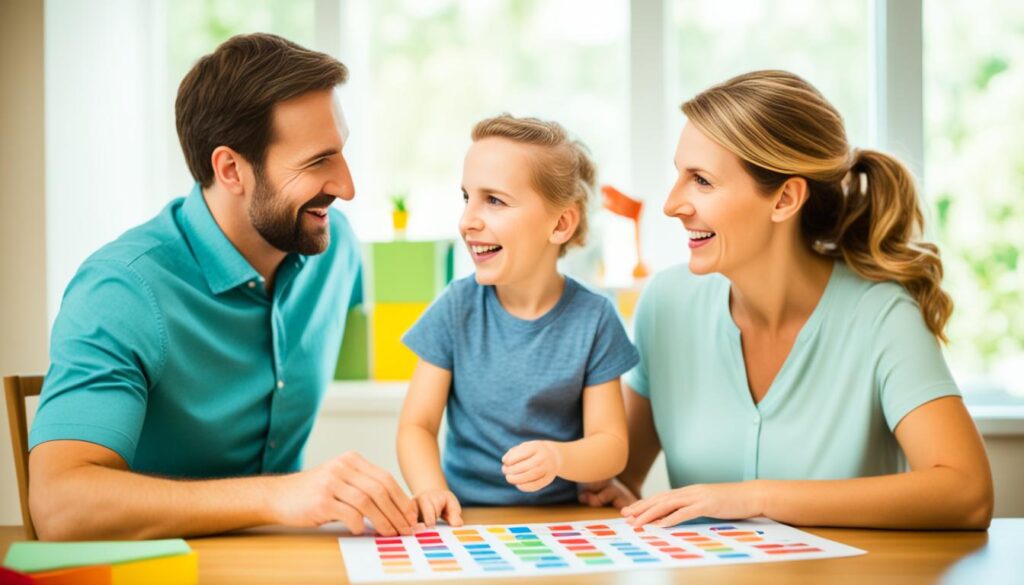
Visitation arrangements play a significant role in co-parenting after divorce. By engaging in clear communication, creating stability, and respecting children’s wishes, parents can establish visitation plans that cater to the needs of their children. These arrangements provide a sense of security and predictability, ensuring that children can maintain a healthy relationship with both parents while adapting to the new family structure.
Minimizing Conflict and Fostering Positive Co-Parenting
Conflict between divorced parents can have a significant impact on the well-being of their children. It is crucial to minimize conflict and create a positive co-parenting environment that prioritizes the best interests of the children involved. By employing effective communication strategies and keeping children out of the middle of any disputes, parents can work together to foster a healthier and more supportive post-divorce relationship.
One of the key elements in minimizing conflict during divorce is effective communication. It is essential for parents to maintain open lines of communication and actively listen to each other’s concerns and perspectives. By doing so, they can better understand each other’s needs and come to mutually beneficial solutions. When discussing matters related to their children, it is important for parents to focus on the well-being of the child rather than personal disagreements or past conflicts.
“When parents can communicate effectively and respectfully, they create a positive co-parenting environment where children can thrive.” – Dr. Sarah Thompson, Child Psychologist
Setting ground rules is another crucial aspect of minimizing conflict and fostering positive co-parenting. By establishing clear guidelines and expectations, parents can avoid misunderstandings and disagreements. These ground rules may cover areas such as visitation schedules, communication methods, and decision-making processes. When both parents are aware of the agreed-upon boundaries, it becomes easier to navigate potential conflicts and find resolutions that prioritize the best interests of the children.
Seeking professional help, such as family counseling or mediation, can be beneficial for parents struggling to minimize conflict during divorce. A neutral third party can provide guidance and support in improving communication, managing emotions, and finding common ground. Professional intervention can help parents develop effective coping strategies and co-parenting techniques that create a healthier environment for their children.

| Benefits of Minimizing Conflict and Fostering Positive Co-Parenting |
|---|
| 1. Increased emotional well-being for children. |
| 2. Improved co-parenting relationship. |
| 3. Enhanced stability and consistency for children. |
| 4. Reduced negative impact on children’s mental health. |
| 5. Better long-term outcomes for children’s development. |
By minimizing conflict and fostering positive co-parenting, parents can create a supportive environment that allows their children to thrive. It is crucial to prioritize effective communication, set ground rules, and seek professional help when necessary. Ultimately, by working together in the best interests of their children, parents can navigate the challenges of divorce and create a brighter future for their family.
Maximizing Contact and Maintaining Consistency
When it comes to children of divorced parents, maximizing contact with both parents is generally beneficial, as long as it is done in a low-conflict environment. Maintaining consistent routines and spending quality time with each parent are essential aspects of promoting the well-being of children.
Maximizing contact can involve creative arrangements during weekends, school vacations, and summer holidays. It’s important for parents to communicate effectively and be flexible in scheduling visitation to accommodate both parents’ availability and the children’s needs. By doing so, children can maintain meaningful relationships with both parents.
Establishing consistent routines is crucial in creating a sense of security and confidence for children. This includes having consistent bedtimes, mealtimes, and daily activities in both households. When children know what to expect, it reduces anxiety and helps them adjust to the changes brought about by the divorce.
In addition to consistent routines, spending quality time alone with each child is essential. This one-on-one time allows parents to strengthen their bond with their children, provide emotional support, and engage in activities that the child enjoys. It also gives children the opportunity to express their thoughts and feelings in a safe and nurturing environment.

Examples of Activities for Quality Time
| Parent 1 | Parent 2 |
|---|---|
| Going for a hike | Creating art together |
| Cooking and baking | Playing board games |
| Watching a movie | Going to the park |
By maximizing contact with both parents, maintaining consistent routines, and spending quality time with each parent, children can experience stability, feel loved and supported, and develop resilience in the face of divorce-related challenges.
Identifying and Addressing Troubling signs
After a divorce, some children may encounter psychological difficulties that require attention. It is crucial for parents to be vigilant and watch for signs that indicate potential problems in their children’s well-being. Some common signs of trouble include:
- Increased anxiety: Children may become more anxious than usual, displaying restlessness, nervousness, or excessive worry.
- Sadness and mood changes: Children may exhibit prolonged sadness, frequent crying, or sudden shifts in their emotional state.
- Changes in eating or sleep habits: Disrupted appetite or sleep patterns can be indicators of distress in children.
- Difficulty at school: Noticeable changes in academic performance, lack of concentration, or behavioral issues in the classroom may signify underlying problems.
- Aggressive behavior: Children may display aggression, anger, or defiance, which can be a result of unresolved emotional issues.
If any of these signs are observed, parents should consider seeking professional evaluation and intervention. Qualified professionals, such as therapists or psychologists specializing in child counseling, can provide valuable guidance and support for children experiencing post-divorce difficulties.
It is also important for parents to maintain open communication with the child’s important adults, such as teachers and caregivers. Collaboration with these individuals can aid in identifying troubling signs and ensuring the child receives appropriate support.
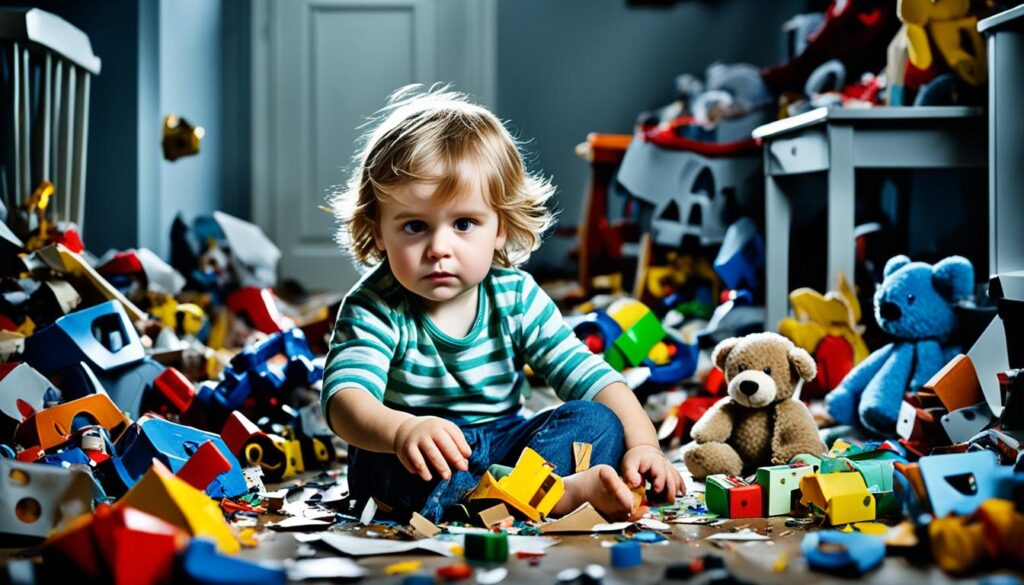
This insightful illustration demonstrates the different signs of trouble in children post-divorce. Each signal represents a potential area of concern that parents should be attentive to.
Conclusion
Divorce is a challenging time for children, but with the right coping strategies, parents can support their children in navigating this difficult period. By understanding and addressing their children’s reactions, modeling calm and civility, seeking necessary support, and maintaining open communication, parents can help their children cope with divorce successfully.
It is important to remember that every child is unique, and strategies should be tailored to their individual needs. Patience, understanding, and love are key in guiding children through divorce and empowering them to thrive.
By allowing children to express their emotions, establishing consistent routines, and providing a safe space for communication, parents can create an environment where children feel supported and understood during this challenging time. Seeking professional help and utilizing available support services can also greatly benefit both parents and children.
In conclusion, coping with divorce is a journey that requires dedication and empathy. By implementing these coping strategies, parents can help their children build resilience, develop healthy coping mechanisms, and ultimately emerge stronger from the experience.
FAQ
What are some coping strategies for children of divorced parents?
Coping strategies for children of divorced parents can include allowing children to express their emotions, establishing consistent routines, encouraging open communication, and seeking support from professionals and support groups.
How can parents support their children through divorce?
Parents can support their children through divorce by creating a safe space for them to express their feelings, reassuring them that it’s okay to feel upset or angry, and avoiding pressuring them to be happy. Additionally, parents should address common worries and behaviors, provide extra support and attention, and be aware of signs of depression or difficulty concentrating.
How can parents model calm and civility during a divorce?
Parents can model calm and civility during a divorce by avoiding speaking negatively about their ex-spouse in front of their children, presenting a united front whenever possible, and minimizing conflict. By maintaining a positive and civil relationship, parents can minimize the impact of conflict on their children.
What support should divorced parents seek for themselves and their children?
Divorced parents should seek support for themselves by talking to friends and family, asking for help when needed, and considering therapy if necessary. They should also explore available support services for their children, such as counseling at school or community programs specifically designed for children of divorced parents.
How should parents explain divorce to their child?
When explaining divorce to a child, parents should tailor the explanation to their age and understanding. It’s important to be honest and answer any questions as honestly as possible. Parents should encourage open communication and let their child know they can trust them or seek support from other trusted adults if needed.
How should visitation arrangements be handled after a divorce?
It’s essential for parents to discuss and agree on visitation arrangements before involving the children. Clear communication about living arrangements, schedules, and handover procedures can help create stability and predictability for children. As children grow older, it’s important to respect their wishes and involve them in decisions regarding visitation whenever appropriate.
How can conflict between divorced parents be minimized for the well-being of children?
Conflict between divorced parents can be minimized by focusing on positive co-parenting and working together for the sake of their children. Effective communication, setting ground rules, and seeking professional help if necessary can help navigate co-parenting challenges and create a healthier environment for children.
Is more contact with both parents beneficial for children during and after a divorce?
Generally, more contact with both parents is beneficial for children, provided that the parents can maintain a low-conflict environment. Maximizing contact can involve creative arrangements during weekends, school vacations, and summer holidays. It’s essential to establish consistent routines in both households, ensuring children feel secure and confident.
What signs should parents watch for in children following a divorce?
Parents should watch for signs such as increased anxiety, sadness, changes in eating or sleep habits, difficulty at school, or aggressive behavior in children following a divorce. Seeking professional evaluation and intervention can help address and manage these issues. It’s also crucial to communicate with teachers and other important adults in the child’s life, maintaining a support network to observe and assist in identifying any troubling signs.

